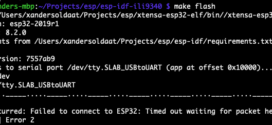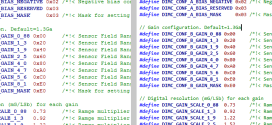 A new version of the colour sensor has been brought out by HiTechnic. It features a number of new abilities:
A new version of the colour sensor has been brought out by HiTechnic. It features a number of new abilities:
- Increased sensitivity; the sensor can determine a large object’s colour from up to 20 cm away.
- No longer needs an RGB LED but uses a bright white LED instead. The RGB values are determined by the very sensitive colour sensor.
- The LED can be switched off to determine the RGB values of ambient light or a light source directed at the sensor. Now you can really tell the difference between a fluorescent light and an incandescent light bulb.
Rather than sending me a fully assembled sensor, HiTechnic sent it to me in discrete parts, namely the PCB (Printed Circuit Board) with all the components, the grey body, the white cover and the black cap with holes. This would allow me to take some pictures of its innards to share with you before closing it all up.
So without further ado, I present to you the new colour sensor in all its naked, exposed glory:
![Extreme close up of colour sensor. [Click to enlarge] Extreme close up of colour sensor. [Click to enlarge]](http://mightor.files.wordpress.com/2009/07/cimg9579_edited_thumb.jpg) I didn’t take pictures of the underside of the PCB since there really wasn’t much there. The domed component on top of the colour sensor is a very bright LED. The colour sensor is the cylindrical shaped clear doodad at the bottom with the flat front. When viewed from the front you can see there is a rather large square sensing area. I took a macro picture of the colour sensor itself, which you can see here on the left. If you look very closely, you’ll notice that the light is reflected at a 90 degree angle onto the sensor which is actually mounted on the PCB. This is done by the black block which you can see in the above right, notice how it has that surface at a 45 degree angle? I realised this when I saw the small vias (connections between the different PCB layers) next to the sensor area which could only be on the PCB itself.
I didn’t take pictures of the underside of the PCB since there really wasn’t much there. The domed component on top of the colour sensor is a very bright LED. The colour sensor is the cylindrical shaped clear doodad at the bottom with the flat front. When viewed from the front you can see there is a rather large square sensing area. I took a macro picture of the colour sensor itself, which you can see here on the left. If you look very closely, you’ll notice that the light is reflected at a 90 degree angle onto the sensor which is actually mounted on the PCB. This is done by the black block which you can see in the above right, notice how it has that surface at a 45 degree angle? I realised this when I saw the small vias (connections between the different PCB layers) next to the sensor area which could only be on the PCB itself.
A ROBOTC driver for this sensor and some of its new functionality will be available very shortly as part of the ROBOTC Driver Suite. Until then you can safely use the sensor with the drivers for the older model, you just won’t have access to some of its advanced features.
 Bot Bench I'd Rather Be Building Robots
Bot Bench I'd Rather Be Building Robots
![New HiTechnic Colour Sensor [Click to enlarge] New HiTechnic Colour Sensor [Click to enlarge]](http://mightor.files.wordpress.com/2009/07/cimg9573_edited1_thumb.jpg)
![New HiTechnic Colour Sensor [Click to enlarge] New HiTechnic Colour Sensor [Click to enlarge]](http://mightor.files.wordpress.com/2009/07/cimg9574_edited1_thumb.jpg)




Well that sure does look awesome. It will be nice if it is a cheap version of the camera sensor. Only using color 🙂 it will be amazing to sense color from such a distance.
I have tried a large variety of black surfaces and sensor distance/orientation and the sensor gives a reading of 13-14 instead of 0 in the ultrasonic-cm test mode. I have configured the mains frequency correctly. Is anyone facing the same issue with sensing black color with the Hitechnic v2 color sensor?